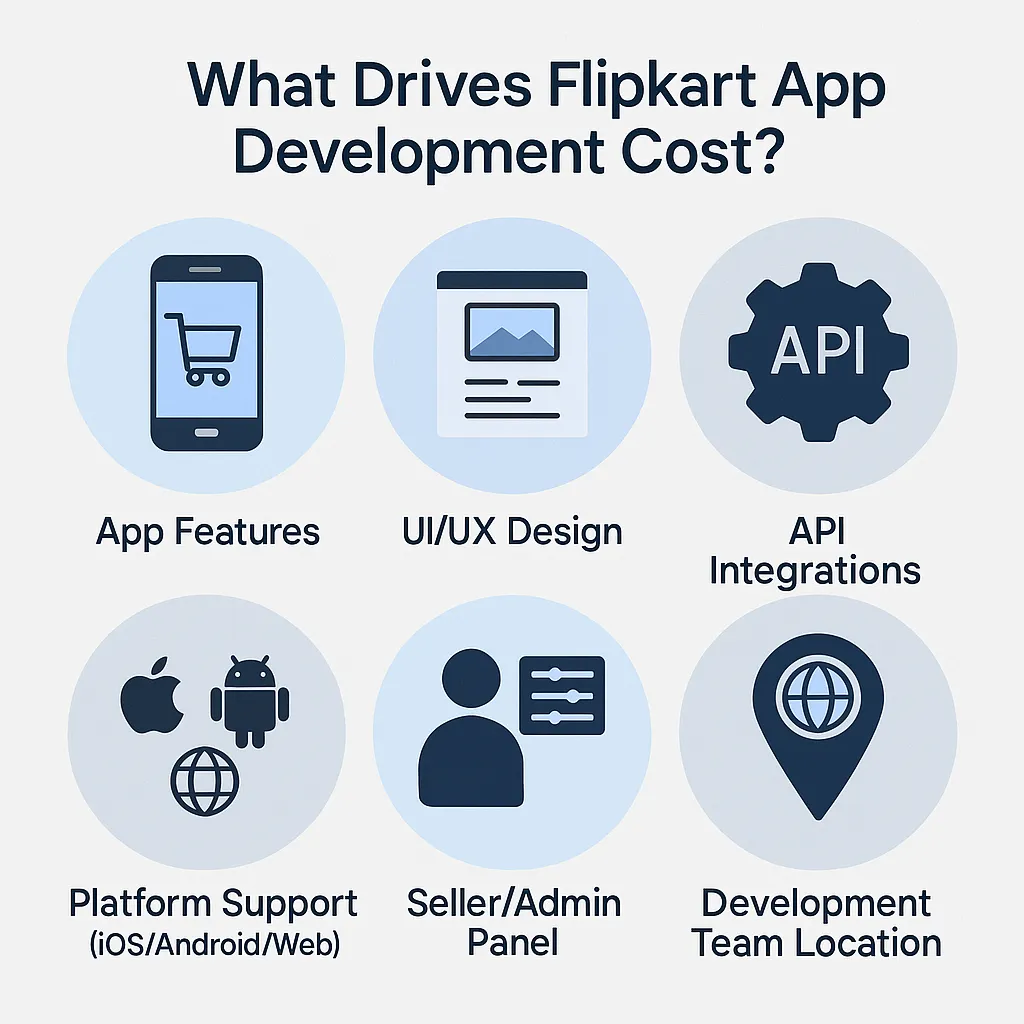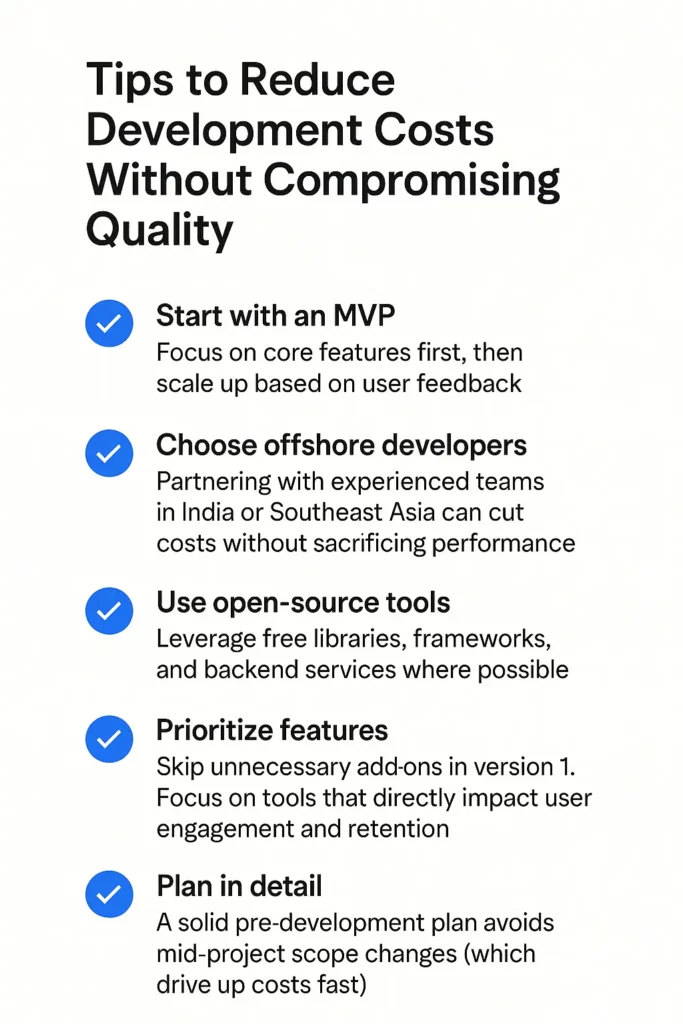Flipkart App Development Cost in 2025 : Full Pricing Guide
Create a powerful, customizable streaming solution with Miracuves’ Flipkart, equipped with high-performance features and next-gen technology.
Planning to build your own ecommerce marketplace like Flipkart? Before diving into features or hiring developers, the first question every startup should ask is: how much will it cost?
A Flipkart-style app isn’t just an online store — it’s a complete ecommerce ecosystem. From product listings, inventory management, and real-time payments to seller dashboards and logistics integration, developing this type of platform requires serious planning and a well-allocated budget.
To get a clearer picture of what’s involved, you can explore this Flipkart Clone solution by Miracuves — it outlines the essential modules and capabilities typically included in a Flipkart-like build.
Whether you’re a D2C brand launching your own platform or a marketplace startup looking to scale fast, understanding the Flipkart app development cost helps you make smarter decisions — from MVP planning to post-launch optimization.
In this guide, we’ll break down the major cost drivers, regional pricing, complexity levels, and ways to reduce spend without compromising on scalability or performance.

Key Factors That Influence Development Cost
There’s no fixed price tag for building a Flipkart-like ecommerce app. Your cost depends on the app’s scope, your go-to-market strategy, and how you build it.
Here’s what impacts your total investment:
App Features & Product Modules → The more complex the catalog, payment options, shipping rules, and inventory flow, the higher the cost.
UI/UX Design → Ecommerce users expect fast load times, smart filters, personalized deals, and a seamless cart-to-checkout flow.
Third-Party Integrations → Payment gateways, logistics APIs, SMS/email notifications, warehouse sync tools — all require time and cost to integrate.
Platform Coverage → Building for iOS, Android, and Web increases dev time and testing across environments.
Admin & Seller Panels → Full marketplaces need dual-side functionality: customer shopping frontend + seller/inventory backend.
Custom vs. Clone Build → A white-label Flipkart clone can reduce initial spend, but might limit your long-term flexibility.
Development Team Location → Developer rates vary across regions — with India and Eastern Europe offering cost-effective ecommerce expertise.
Flipkart App Development Cost by App Complexity
To give you a clearer picture, here’s a breakdown of average development costs based on app complexity.
This range includes design, development, QA testing, and basic post-launch support — not hosting, marketing, or licensing.
|
App Type
|
Estimated Cost Range (USD)
|
Description
|
|---|---|---|
|
MVP (Minimum Viable Product)
|
$12,000 – $25,000
|
Includes core features: product catalog, user registration, shopping cart, basic checkout, and vendor onboarding. Ideal for testing early traction.
|
|
Standard Version
|
$25,000 – $60,000
|
Adds advanced search filters, product ratings, payment integration, multi-vendor dashboard, customer support module, admin panel. Suitable for soft launch.
|
|
Full-Featured App
|
$60,000 – $150,000+
|
Includes hyperlocal delivery, real-time tracking, AI product suggestions, analytics dashboard, loyalty wallet, coupons, split payments, and scalable backend.
|
Average Cost Estimates by Region
Where you hire your development team significantly affects total cost. Here’s a region-wise breakdown:
|
Region
|
Hourly Rate (USD)
|
Typical Cost for Standard App
|
|---|---|---|
|
North America
|
$100 – $200/hr
|
$100,000 – $200,000+
|
|
Western Europe
|
$80 – $150/hr
|
$80,000 – $160,000+
|
|
Eastern Europe
|
$40 – $80/hr
|
$40,000 – $90,000+
|
|
India & Southeast Asia
|
$20 – $50/hr
|
$20,000 – $60,000+
|
Partnering with a skilled offshore team helps reduce cost while maintaining performance — especially if they specialize in ecommerce platforms.
Cost Breakdown by Development Stage : Flipkart Clone
Understanding how your budget is allocated across each phase of development helps you avoid hidden costs and make smarter investment decisions. Here’s a typical cost distribution by development stage for a Flipkart-like marketplace app:
|
Development Stage
|
Estimated % of Total Cost
|
Includes
|
|---|---|---|
|
Discovery & Planning
|
5–10%
|
Market research, competitor analysis, defining user personas, feature scoping, technical requirements.
|
|
UI/UX Design
|
10–15%
|
Wireframing, prototyping, responsive design, visual branding, user experience mapping.
|
|
Frontend & Backend Dev
|
40–50%
|
Core feature development, database architecture, APIs, payment integrations, dashboard and logic build.
|
|
Testing & QA
|
10–15%
|
Manual and automated testing, bug fixing, device/browser compatibility checks, performance tuning.
|
|
Deployment & Launch
|
5–10%
|
App store submission (Android/iOS), server setup, production deployment, performance monitoring tools.
|
|
Maintenance & Updates
|
10–20%
|
Post-launch bug fixes, new features, server maintenance, user support, compliance updates.
|

How to Reduce Flipkart App Development Costs (Without Compromising Quality)
Building a Flipkart-style ecommerce platform is a big investment, but it doesn’t have to break your budget. Here are smart ways to control costs without sacrificing performance:
Start lean with an MVP → Focus on core features first, launch faster, and iterate based on real user behavior
Choose the right tech partner → Look for teams with ecommerce experience and end-to-end delivery capability
Leverage white-label clone solutions → Save months of dev time and thousands in cost without compromising on quality
Use pre-built integrations → Don’t build APIs from scratch — use trusted ecommerce providers for logistics, payments, etc.
Build modularly → Launch with essentials and add features like loyalty programs or analytics in future phases
With a phased development approach and a skilled partner, you can launch smart and scale efficiently.
Choose the Right Development Partner
Even with the best plan, execution matters. Choosing the right development team is crucial to building a scalable, secure, and conversion-friendly ecommerce platform.
Here’s what to look for in your Flipkart clone app development partner:
Proven experience in ecommerce and multi-vendor platforms
Deep understanding of logistics, payments, and seller management
End-to-end services — from UX design to post-launch optimization
Scalable codebase with a future-proof tech stack
At Miracuves, we specialize in building fast, reliable, and scalable ecommerce clone apps tailored for startups and enterprise needs alike. Whether you’re launching in a niche market or aiming for mass adoption, our Flipkart clone solutions are built to help you go live faster and scale smarter.
Let us take care of the build — so you can focus on building your brand.
Conclusion
The cost to develop a Flipkart-style ecommerce app in 2025 ranges from $30,000 for a basic MVP to $250,000+ for a feature-rich, scalable platform. Your final cost depends on your goals, complexity, team location, and long-term roadmap.
Want a clear estimate based on your business model?
Talk to Miracuves today — and get a tailored roadmap to bring your ecommerce vision to life.
Explore our full series on ecommerce clones for more insights on features, monetization, and growth strategies.
Frequently Asked Questions
Expect a range from $30,000 to $250,000+, depending on features, platform complexity, and team location.
A basic MVP can take 3–4 months, while a full-featured app may require 6–9 months of development.
Yes. A pre-built, customizable clone helps reduce both cost and time-to-market, especially for startups.
Search, product catalog, cart, checkout, payments, order tracking, and basic admin control are MVP essentials.
Miracuves offers scalable, cost-efficient ecommerce clone solutions with full support — from strategy to launch and beyond.



